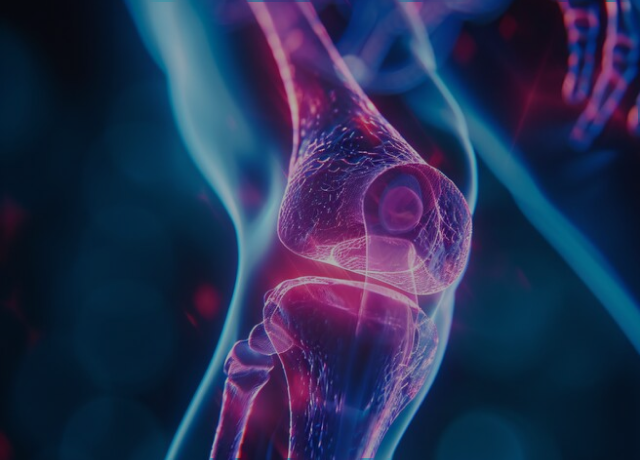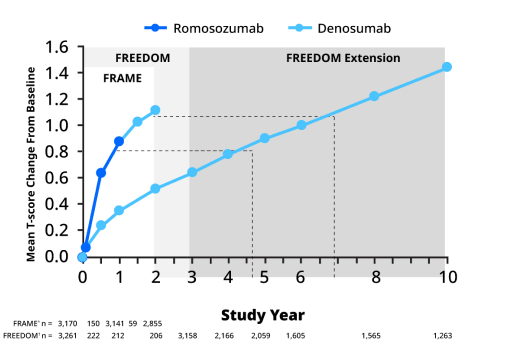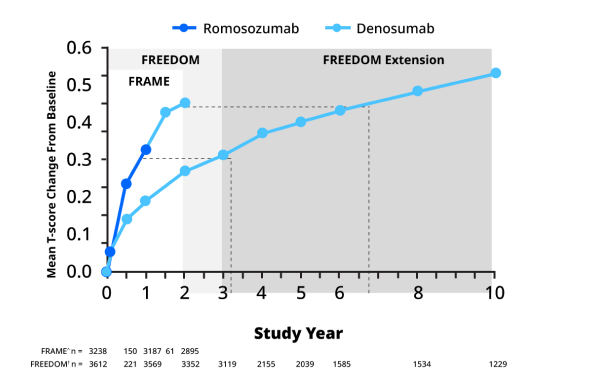Welcome
By selecting the Yes, leave Opcaseportalmy.com option you understand that you are leaving the website and that you will be redirected to another Internet site belonging to third parties, for whose content or opinions Amgen Malaysia is not responsible and makes no representations regarding such content or its accuracy. By selecting this option and accessing linked third-party sites, you understand that you do so at your own risk.
The website to which you will be redirected may be designed exclusively for residents of a particular country or countries, as advertised on that website. As a consequence, the website to which you will be directed may contain information on pharmaceutical products or indications that are not approved in Malaysia. If you reside in a country other than the one to which such website is directed, please contact your local Amgen affiliate for the correct information on products in your country of residence.


Between BMD & Fracture Risk
Bone Mineral Density (BMD) is a key predictor of fracture risk. Clinical evidence shows that lower BMD levels significantly increase the likelihood of fractures, highlighting the importance of early assessment and intervention to prevent osteoporosis-related fractures.
-
T-score Increases at the Lumbar Spine in FRAME Relative to FREEDOM and FREEDOM Extension2
- BMD T-score improvement from baseline at the lumbar spine in patients treated with 1 year of romosozumab in FRAME were similar to that observed with 4.5 years of denosumab treatment in FREEDOM
- 1 year of romosozumab followed by 1 year of denosumab treatment in FRAME led to BMD changes similar to 7 years of denosumab treatment
 Adapted from: Cosman F, et al. J Bone Miner Res. 2018;33:1219-1226.
Adapted from: Cosman F, et al. J Bone Miner Res. 2018;33:1219-1226.N indicates the number of patients with a baseline and ≥ 1 postbaseline DXA BMD measurement; n indicates the number of patients with evaluable data at the time point of interest. *BMD was measured more frequently (months 6 and 18) in a subset of patients from FRAME who participated in a DXA substudy; additionally, BMD was measured at month 6 in women from Argentina. †BMD was measured more frequently in a subset of patients from FREEDOM who participated in a DXA substudy.
BMD=bone mineral density; DXA=dual-energy x-ray absorptiometry -
T-score Increases at the Total Hip in FRAME Relative to FREEDOM and FREEDOM Extension2
- BMD T-score improvement from baseline at the lumbar spine in patients treated with 1 year of romosozumab in FRAME were similar to that observed with 3 years of denosumab treatment in FREEDOM
- 1 year of romosozumab followed by 1 year of denosumab treatment in FRAME led to BMD changes similar to 7 years of denosumab treatment
 Adapted from: Cosman F, et al. J Bone Miner Res. 2018;33:1219-1226.
Adapted from: Cosman F, et al. J Bone Miner Res. 2018;33:1219-1226.N indicates the number of patients with a baseline and ≥ 1 postbaseline DXA BMD measurement; n indicates the number of patients with evaluable data at the time point of interest. *BMD was measured more frequently (months 6 and 18) in a subset of patients from FRAME who participated in a DXA substudy; additionally, BMD was measured at month 6 in women from Argentina. †BMD was measured more frequently in a subset of patients from FREEDOM who participated in a DXA substudy.
BMD=bone mineral density; DXA=dual-energy x-ray absorptiometry -
References
1. Bouxsein ML, Eastell R, Lui LY, et al.; FNIH Bone Quality Project. Change in Bone Density and Reduction in Fracture Risk: A Meta-Regression of Published Trials. J Bone Miner Res. 2019 Apr;34(4):632-642.
2. Cosman F, et al. FRAME Study: The Foundation Effect of Building Bone With 1 Year of Romosozumab Leads to Continued Lower Fracture Risk After Transition to Denosumab. J Bone Miner Res. 2018;33(7):1219-1226.
-
Important Safety Information:Osteoporosis Case BinderThis curated collection of patient case studies aims to provide healthcare practitioners in the area of bone health, with a comprehensive understanding of risk-based treatment approach in the long-term management of patients living with osteoporosis.The patient cases were contributed by bone health experts from respective clinical setting, incorporating evidence-based discussions, guidelines and clinical considerations in the individualised treatment sequencing plans of different real-world scenarios..Please review full product information before prescribingFor Healthcare Professionals Only.Please refer to full prescribing information prior to administrationFor information on Amgen products or to report an adverse event involving an Amgen product, please contact Medical Information at 1800 818 227 or medinfo.JAPAC@amgen.comSC-MAL-CP-00128-0425Endorsed By:

